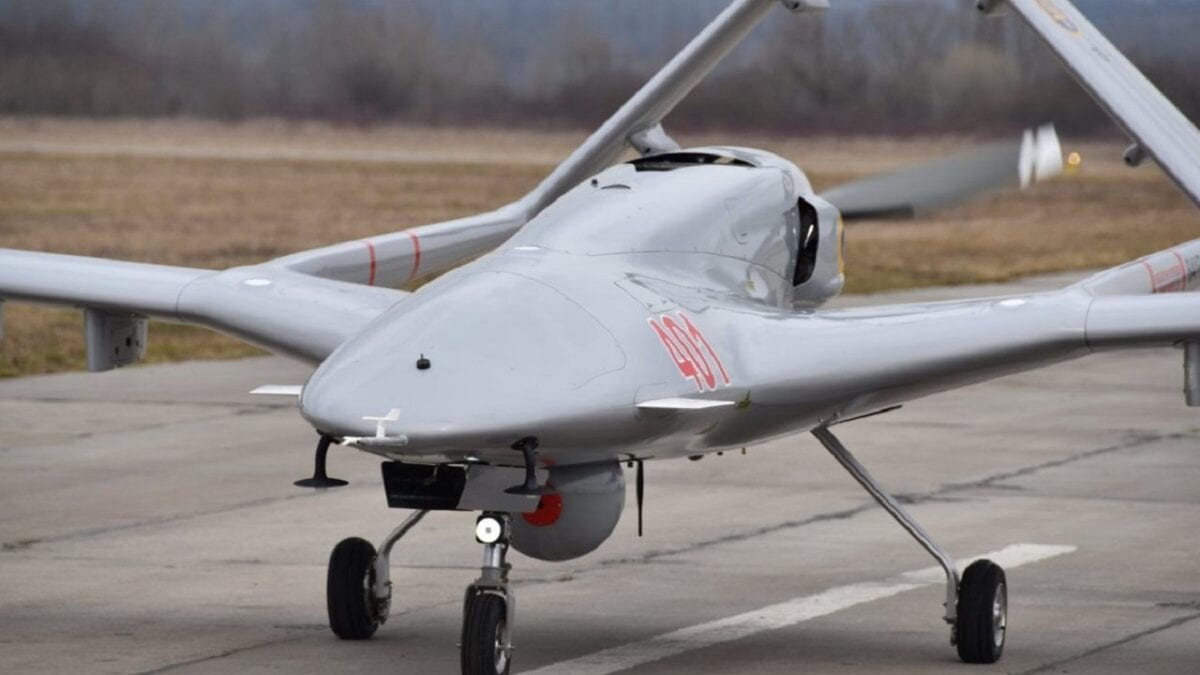It took the war in Ukraine to show the world that Turkey can make a mean drone. You may have heard of the Turkish-made Bayraktar TB2 drone that is making life miserable for Russia’s military. If not, take it from us, the TB2 is massively effective. Now the Turkish drone maker Baykar is testing a new combat drone called the Bayraktar Akinci and the Turks hope to build on the success of the TB2 unmanned aerial vehicle.
New Drone is Hitting Significant Milestones
The long-range high-endurance Akinci passed another test May 21 when two of the combat drones took off from Turkey and made it all the way to Azerbaijan. The Akinci is expected to make an impression by being featured at a technology festival in Azerbaijan, so the Turks flew it there to make a statement.
The flight of the Akinci began in the Tekirdağ’s Çorlu district in northwest Turkey. Then they flew over Georgia and landed at Heydar Aliyev International Airport in Baku. The flight was 1,243 miles long and the drones made it in five hours.
It’s Built for Multiple Combat Roles
Baykar delivered the Akincis to the Turkish military in August of last year and they are making drone watchers take notice. A previous test in April showed off the combat drone’ armaments. It displayed several interesting aspects during this flight. First, it hit a target on the water using a MK-82 bomb. Second, the Ankici was working in tandem with a TB2. The TB2 laser designated the target, and it was bombs away. Third, the elevation of the attack was impressive – the bomb dropped from 20,000 feet.
Akinci Aims to Mirror the Missions of Manned Fighter Jets
The company web site has much to brag about. The system has artificial intelligence for better situational awareness and is made for difficult combat missions you would associate with a manned warplane flight. Plus, it can carry out intelligence and recon missions.
“Bayraktar Akinci is capable of conducting operations that are performed with fighter jets. It carries electronic support systems, dual satellite communication systems, air-to-air radar, collision avoidance radar and synthetic aperture radar,” according to the corporate web site.
Can It Really Deploy All Those Weapons?
The Akinci has a whopping 3,000-pound payload. This including an array of ordnance the aircraft can deploy is impressive if the company can be believed. It can deliver mini-smart munitions, air-to-air and air-to-ground missiles, and other types of guided bombs.
The wings and fuselage are specifically designed to carry these munitions. The aircraft is big for a drone. It is 40-feet long, 13-feet high, with a wingspan of 65-feet. The take-off weight is 12,100 pounds.
Excelling in Stand-off Combat
The ability to fire stand-off missiles out of the range of other killer drones and surface-to-air missiles is a big selling point for the Turkish military. The Akinci is built for the stand-off missile game that will be so prevalent in warfare in the coming years. Customers like the Ukrainian army – who is so good at flying the TB2 – can eventually buy the Akinci, although it is not clear how much the newer drone will cost and whether it can be easily exported.

TB2 Drone. Image Credit: Creative Commons.

Bayraktar TB2 Drone of the Ukrainian Air Force.
Baykar is becoming a leader in combat and recon drone technology. Turkey is a NATO member, and the drone could potentially be purchased by member nations to bolster unmanned capabilities. The Akinci shows the Turkish military industrial base has world-class aerial designers and engineers. I’m impressed by the size, long range, loiter time, and the number of arms systems it can carry. Ukraine can only hope that the Akinci could someday join the TB2 in the war against Russia.
Now serving as 1945’s Defense and National Security Editor, Brent M. Eastwood, PhD, is the author of Humans, Machines, and Data: Future Trends in Warfare. He is an Emerging Threats expert and former U.S. Army Infantry officer. You can follow him on Twitter @BMEastwood.

